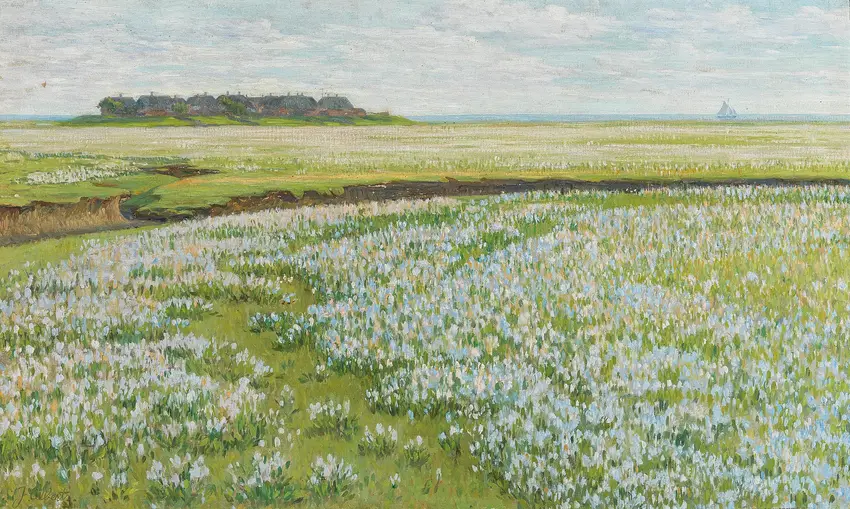Jacob Alberts
Jacob Alberts (1860–1941), German, A painter of quiet intensity, this German artist captured the stark beauty of coastal landscapes with a restrained yet evocative hand. Working primarily in the late 19th and early 20th centuries, his oeuvre reflects a deep connection to the North Sea, particularly the Frisian Islands, where he spent much of his life. Unlike the dramatic Romanticism of contemporaries, his work embraced subtlety—muted skies, windswept dunes, and the rhythmic solitude of tides. Broad, confident brushstrokes defined his style, often verging on abstraction while retaining a firm grasp of natural light.
Though less celebrated than peers like Max Liebermann, his influence persists in regional art circles, where his ability to distill the essence of place—without sentimentality—remains admired. Themes of transience and resilience recur; his shores are neither picturesque nor harsh but alive with quiet tension. Later years saw experimentation with looser forms, though he never fully abandoned his foundational realism. Today, his works are held in smaller German collections, a testament to an artist who found profundity in the overlooked.
Though less celebrated than peers like Max Liebermann, his influence persists in regional art circles, where his ability to distill the essence of place—without sentimentality—remains admired. Themes of transience and resilience recur; his shores are neither picturesque nor harsh but alive with quiet tension. Later years saw experimentation with looser forms, though he never fully abandoned his foundational realism. Today, his works are held in smaller German collections, a testament to an artist who found profundity in the overlooked.
-

A Vast Summer Landscape
Jacob Alberts (German, 1860–1941)A sunlit expanse of fields and sky, alive with subtle details and the quiet hum of summer.
